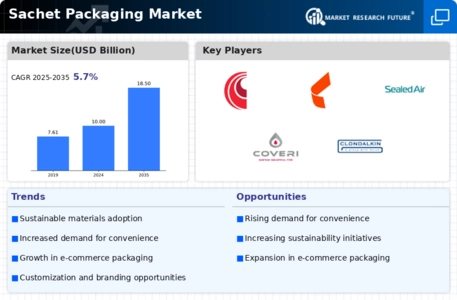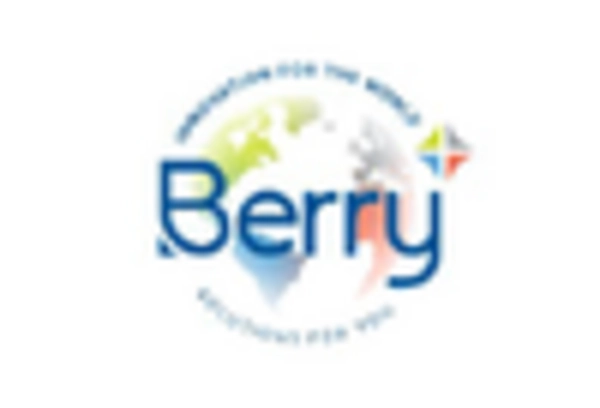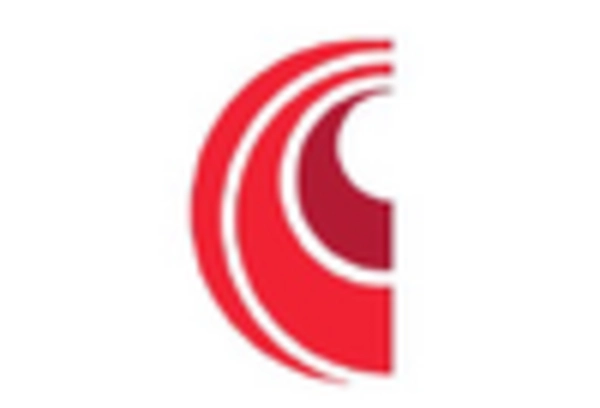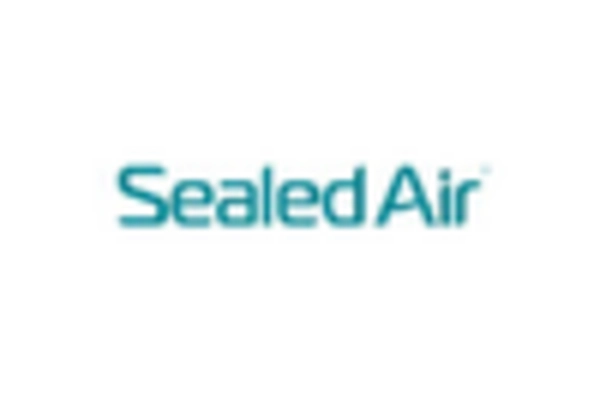Market Trends
Introduction
As we delve deeper into the sachet market, it is necessary to recognize the macro-economic factors that are shaping its future. The constant development of science and technology is driving the development of new materials and new manufacturing processes that will lead to more efficient and sustainable packaging solutions. At the same time, the regulatory framework is putting increasing pressure on manufacturers to adopt sustainable practices in line with global sustainability goals. And finally, changes in consumer behavior, namely the growing demand for convenient, single-use products, are influencing the design and functionality of packaging. These trends are of strategic importance for the industry, as they not only reflect changing market dynamics but also offer opportunities for differentiation and gaining a competitive advantage in a market that is becoming increasingly saturated.
Top Trends
-
Sustainability Initiatives
Companies are increasingly adopting biodegradable and recyclable materials for the sachets they use. For example, Amcor has promised to make all its packaging materials fully recyclable by 2025. The shift towards more sustainable products is largely driven by the consumers’ demand. Some 66% of consumers are willing to pay more for a sustainable product. As for the operational impact, this could mean a higher investment in the R&D of eco-friendly materials and, consequently, more innovative packaging solutions. -
Smart Packaging Technology
The use of smart packaging is on the rise. This makes it possible to engage with consumers and track products. For example, Huhtamaki is experimenting with using NFC and QR codes to communicate product information to consumers. A report on the smart packaging market indicates that it is expected to grow significantly, pointing to a move towards more interactivity in the packaging. This trend may lead to increased loyalty and differentiation between brands. -
Customization and Personalization
The tendency to personalise sachets is a result of the growing desire for a 'made-to-measure' product. Brands are now able to create unique designs, as ProAmpac has demonstrated. It is estimated that 40 per cent of consumers are more likely to buy a personalised product. This trend could increase loyalty and boost sales, and it is causing companies to invest in flexible production. -
Health and Safety Regulations
Health and safety regulations are having a big influence on the market for sachets, especially in the food and pharmaceutical industries. The authorities are introducing legislation that is driving manufacturers like Sonoco to improve the safety features of their products. According to research, consumers are now putting safety first when choosing packaging. This trend is resulting in higher investment in quality control and compliance, and that is affecting operating costs. -
E-commerce Growth
It is also a question of the growth of e-commerce which is putting a high demand on sachets, which ensure the integrity of the products during transport. Mondi is responding to this need by developing lightweight and durable sachets. Statistics show that e-commerce turnover is growing at a rate of 20 per cent a year. This trend is forcing manufacturers to develop lighter packaging, which reduces the cost of transport, while ensuring the quality of the product. -
Convenience and Portability
The demand for a convenient way of life is driving the development of portable packages. Brands are focusing on single-serve products. Clondalkin’s range of products is a good example. According to the research, 55% of consumers prefer portable solutions. It’s a trend that’s influencing the way companies are producing products. -
Cost-Effective Solutions
In the sachets market, the need for cost-effective packaging is driving innovation. Companies are now looking at alternative materials and production methods. Coveris’s own initiatives are a good example. Statistics show that cost reduction is the main priority for more than 60% of businesses. This trend could lead to an increased competition between manufacturers to offer low-cost, high-quality packaging. -
Emerging Markets Expansion
The emerging markets are becoming more and more important in the sachet packaging industry. They are driven by rising incomes and increasing demand for disposable income. Those companies such as Sealed Air are supplying the region with a range of tailor-made products. Reports show that demand for sachets in Asia-Pacific is expected to rise sharply. The companies are therefore adapting their strategies to the various needs of consumers in these countries. -
Innovative Barrier Technologies
The barrier properties of barrier films are improving the shelf-life of products in sachets. Companies such as Syntegon Technology are investing in new materials which are even more effective in preventing the penetration of oxygen and water vapour. Research has shown that barrier properties can extend the shelf-life of a product by up to 50 per cent. This trend is likely to increase the demand for high-performance packaging, with the result that production processes are being changed. -
Digital Transformation in Manufacturing
The digital transformation of manufacturing processes is changing the landscape of the packet-making industry. The companies are adopting automation and IoT to make their operations more efficient, as shown by the flexible packages. Statistics show that automation can increase the efficiency of production by 30 percent. This trend is expected to lead to lower operating costs and better product quality, which will also have an impact on market competition.
Conclusion: Navigating the Sachet Packaging Landscape
In the years approaching 2025, the sachet packaging market is characterized by a highly competitive environment and a high degree of fragmentation, with a large number of established and new players vying for market share. According to the regional trends, there is a growing demand for sustainable and flexible packaging solutions, which is driving the market players to innovate and adapt their offerings. The established players have the advantage of their established distribution channels and the loyalty of their customers. New entrants are focusing on the latest technology, such as artificial intelligence for design and automation to increase efficiency. The integration of sustainable solutions into the packaging solutions will be the main differentiating factor, as consumers are increasingly choosing sustainable packaging solutions. These players will be the ones who are able to respond to the market and adapt quickly, which will make strategic positioning and investment in technology key to success.

















Leave a Comment